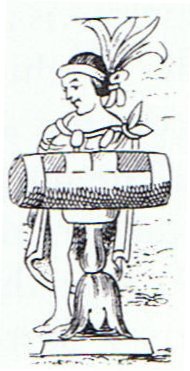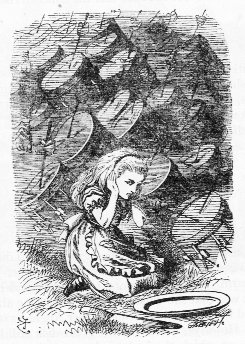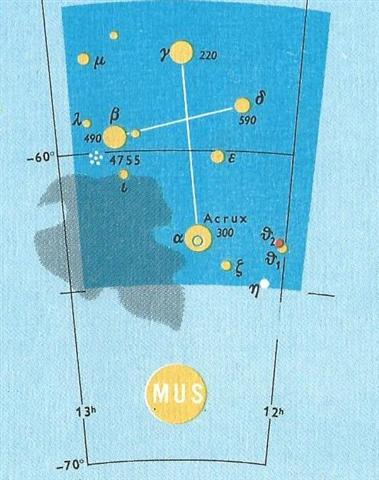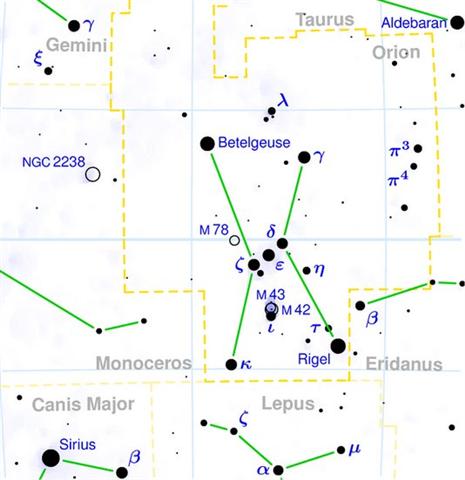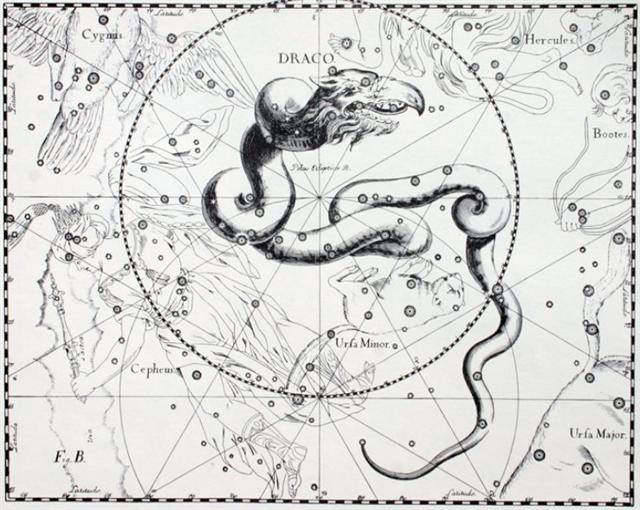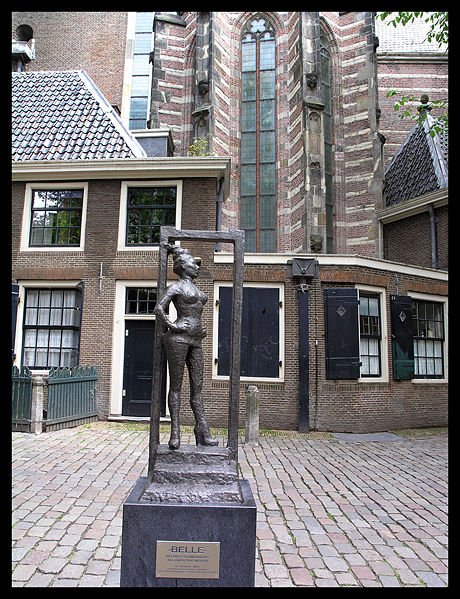The starving 'Rongo Man' (tagata rogo) was the last glyph in line Ca3. It strikes me that he may represent the vanishing winter season (oge-kai), when there was no hole open for the Sun. ... The Maori recognized two main divisions of the year: winter or takurua, a name for Sirius which then shone as morning star, and summer, raumati or o-rongo-nui, 'of the great Rongo', god of agriculture ... ... Pau.: Fakakai, earring. Ta.: faaai, ear ornament. Mq.: hakakai, id. Ma.: whakakai, id.... ... The generally accepted version of the Rehua myth, according to Best, is that Rehua had two wives, the stars on either side of Antares. One was Ruhi-te-rangi or Pekehawani, the personification of summer lanaguor (ruhi), the other Whaka-onge-kai, She-who-makes-food-scarce before the new crops can be harvested ...
One of the possible readings of tagata rogo is 'the man who is announcing' (N. Zeal., rongo, to hear, to sound, report, news.). The position at Cursa suggests an announcement regarding Orion and Auriga:
 The message could be to say that the old year (the prededing Sun king) had 'gone down to the fishes' (was dead).
We should remember the Chinese custom of announcing the end of the old year: ... In China, every year about the beginning of April, certain officials called Sz'hüen used of old to go about the country armed with wooden clappers. Their business was to summon the people and command them to put out every fire. This was the beginning of the season called Han-shih-tsieh, or 'eating of cold food'. For three days all household fires remained extinct as a preparation for the solemn renewal of the fire, which took place on the fifth or sixth day after the winter solstice [Sic!]. The ceremony was performed with great pomp by the same officials who procured the new fire from heaven by reflecting the sun's rays either from a metal mirror or from a crystal on dry moss. Fire thus obtained is called by the Chinese heavenly fire and its use is enjoined in sacrifices: whereas fire elicited by the friction of wood is termed by them earthly fire, and its use is prescribed for cooking and other domestic purposes ... ... Like archaic China and certain Amero-Indian societies, Europe, until quite recently, celebrated a rite involving the extinguishing and renewal of domestic fires, preceded by fasting and the use of the instruments of darkness. This series of events took place just before Easter, so that the 'darkness' which prevailed in the church during the service of the same name (Tenebrae), could symbolize both the extinguishing of domestic fires and the darkness which covered the earth at the moment of Christ's death. In all Catholic countries it was customary to extinguish the lights in the churches on Easter Eve and then make a new fire sometimes with flint or with the help of a burning-glass. Frazer brings together numerous instances which show that this fire was used to give every house new fire. He quotes a sixteenth-century Latin poem in a contemporary English translation, from which I take the following significant lines: On Easter Eve the fire all is quencht in every place, // And fresh againe from out the flint is fecht with solemne grace. Then Clappers cease, and belles are set againe at libertée, // And herewithall the hungrie times of fasting ended bée ... ... The reader will no doubt have noticed that a curious analogy exists between the means employed for the tapped-out call in the South American myths: a resonator made from a gourd of tree-trunk which is struck, sticks which are knocked against each other, or clappers, and a liturgical complex belonging to the Old World, known as the instruments of darkness. The origin of these instruments, and their use from the Thursday to the Saturday of Holy Week, presents a great many problems. As I cannot claim to participate in a complex discussion which lies outside my competence, I shall merely refer to one or two generally accepted points. It would seem that fixed bells in churches did not make their appearance until rather late, about the seventh century. Their enforced silence from the Thursday to the Saturday of Holy Week does not seem to be recorded before about the eighth century (and then only in Rome). At the end of the twelfth and beginning of the thirteenth century, the restriction appears to have spread to other European countries. But the reason for the bells remaining silent, and for them being replaced temporarily by other sources of noise, is not clear. Their alleged journey to Rome, which accounted for their temporary absence, may be no more than an a posteriori explanation, founded moreover on all kinds of beliefs and imaginative suppositions connected with bells: they were thought to be animate, vocal beings, capabe of feeling and acting, and fit for baptism. In addition to summoning the congregation to the church, bells had a meteorological, and even a cosmic, function. Their reverberations drove storms away, dispelled clouds and hail, and destroyed evil spells ... ... [E:87-90] On the thirtieth day of the month of October ('Tangaroa Uri'), Hotu asked about the stone figure (moai maea) named Oto Uta [te moai.maea.ko oto uta.te ingoa]. Hotu said to Teke [he ki.kia Teke.a Hotu], 'Where is the figure Oto Uta (corrected in the manuscript for Hina Riru)?' Teke thought about the question [he hakatopa.a Teke. i roto a ia.i te ki] and then said to Hotu [he kī. kia Hotu.a Teke], 'It was left out in the bay.' [i mua i te hanga ana i re(h)u ro ia.] Hotu said [he ki a Hotu] to Pure O [Ō], to Pure Ki, and to Pure Vanangananga: 'You fellows (kope), sail [ko oho.korua ko nga kope] to the friend (hoou), to Oto Uta. Bring him here [ka too mai], he who is resting out there in the bay [i mua.i te hanga]. Move him carefully (? nee), you fellows, so that the king, that Oto Uta is not damaged!' [o kori a i te ariki.i a oto uta.] [Pure Ō, Pure ki, and Pure vananganaga left (land behind), (they) launched the canoe and sailed to Hiva,] The canoe of Pure O left [i oho.ai] on the fifth day of November ('Ruti'). After the canoe of Pure O had sailed [i oho.era te vaka.o Pure ō.] and had anchored [tomo = to make landfall] out in the bay [i tomo era.ki mua ki te hanga], in Hanga Moria One [ki hanga moria one], Pure saw the figure [he ui a Pure ō.ko te moai], which had been lying there all this time [e moe no ana], and said to his younger brothers (ngaio taina), 'Let's go my friends (hoa), let's break the neck [hahati atu te ngao] of this mean one (or, ugly one, rakerake). Why should we return [ki he.a.tatou i hoki atu ai] to that fragment of earth (te pito o te kainga), i.e. Easter Island? Let us stay in our (home)land!' [he noho ro ai tatou i to tatou kainga.] After the canoe of Pure O had departed [i oho.era te vaka o Pure ō.] ... Pure O picked up a large round stone (pureva) and hit the top of the figure. Because of the stone, the neck of Oto Uta was broken. Then the wind started blowing, the billow rose, the waves broke, the rain started falling, the flame (i.e., lightning) shone brightly, and the thunder rolled. As soon as the wind started blowing, the waves broke, the rain fell, and thunder rolled, King Hotu knew that Pure O had done harm to Oto Uta. Hotu spoke: 'These fellows have done a mean thing to King Oto Uta!' Hotu spoke, 'These fellows have done a mean thing [ku kori ana tau ngaio era] to King Oto Uta!' After the neck of Oto Uta had been broken, Kuihi and Kuaha arrived. They picked up the neck of King Oto Uta, took it, and brought it with them. They arrived out in the bay [he tuu ki mua ki te hanga], in Hanga Rau. (There) Kuihi and Kuaha left (the fragment). They arrived out in the bay [he tuu ki mua ki te hanga], in Hanga Rau. (There) Kuihi and Kuaha left (the fragment). Kuihi and Kuaha arrived [he tuu a kuihi.a kuaha] and told the king the following, 'King Oto Uta is out in the bay of Hanga Rau.' Hotu said [he ki a Hotu] to his servant (tuura) Moa Kehu, 'Go down to King Oto Uta and take him up out of the bay of Hanga Rau!' Moa Kehu arose [he ea a Moa kehu], went down, picked up (the fragment), and carried (it) on his shoulders to the house [to the front of the house, ki mua ki te hare]. There he left it for king Hotu [he hakarere ki te ariki.kia Hotu]. King Hotu sat down [he noho te arik(i).a Hotu] and wept [he tangi] over King Oto Uta. This is [penei] Hotu's lament (tanginga):
And then there was the remarkable incident at the island of Paxi,
... The [tun] glyph is nearly the same as that for the month Pax (T549), except that the top part of the latter is split or divided by two curving lines. Brinton, without referring to the Pax glyph, identified the tun glyph as the drum called in Yucatec pax che (pax 'musical instrument'; che < *te 'wooden). Yucatec pax means 'broken, disappeared', and Quiche paxih means, among other things, 'split, divide, break, separate'. It would seem that the dividing lines on the Pax glyph may have been used as a semantic/phonetic determinative indicating that the drum should be read pax, not tun (cf. de Gruyter 1946, p. 27). Thus, one may expect that this glyph was used elsewhere meaning 'to break' and possibly for 'medicine' (Yuc. pax, Tzel., Tzo. pox) ...
- when in the evening the wind had dropped to a stand-still as if indicating a solstice: ... The father of Aemilianus the orator, to whom some of you have listened, was Epitherses, who lived in our town and was my teacher in grammar. He said that once upon a time in making a voyage to Italy he embarked on a ship carrying freight and many passengers. It was already evening when, near the Echinades Islands, the wind dropped and the ship drifted near Paxi. Almost everybody was awake, and a good many had not finished theire after-dinner wine. Suddenly, from the island of Paxi was heard the voice of someone loudly calling Thamus, so that all were amazed. Thamus was an Egyptian pilot, not known by name to many on board. Twice he was called and made no reply, but the third time he answered; and the caller, raising his voice, said, 'When you come opposite to Palodes, announce that Great Pan is dead.' On hearing this, all, said Epitherses, were astounded and reasoned among themselves whether it were better to carry out the order or to refuse to meddle and let the matter go. Under the circumstances Thamus made up his mind that if there should be a breeze, he would sail past and keep quiet, but with no wind and a smooth sea about the place he would announce what he had heard. So, when he came opposite Palodes, and there was neither wind nor wave, Thamus from the stern, looking toward the land, said the words as he heard them: 'Great Pan is dead'. Even before he had finished there was a great cry of lamentation, not of one person, but of many, mingled with exclamations of amazement. As many persons were on the vessel, the story was soon spread abroad in Rome, and Thamus was sent for by Tiberius Caesar. Tiberius became so convinced of the truth of the story that he caused an inquiry and investigation to be made about Pan; and the scholars, who were numerous at his court, conjectured that he was the son born of Hermes and Penelope ...
From all this we should be somewhat better equipped to look at the beginning of the 4th (unlucky) line following tagata rogo. For here there were people announcing a new king (e gagata ariki):
... The Holy Week, at the close of which the bells must remain silent, is equivalent to the end of the year. ... Holy Week (Latin: Hebdomada Sancta) in Christianity is the last week of Lent. It includes the religious holidays of Palm Sunday (Passion Sunday), Maundy Thursday (Holy Thursday) and Good Friday, and lasts from Palm Sunday until but not including Easter Sunday, as Easter Sunday is the first day of the new season of The Great Fifty Days. It commemorates the last week of the life of Jesus Christ culminating in his crucifixion on Good Friday and his resurrection on Easter Sunday ... The bells are silent during the dark days before a new year (sun) is alighted. Light is needed for order and in darkness disorder 'rules'. ... In Eastern Orthodox Churches and Greek Catholic Churches, during Holy Week, Orthros (Matins) services for each day are held during the preceding evening. Thus, the Matins service of Monday is sung on Palm Sunday evening, and so on. (The services of Sunday through Tuesday evenings are often called Bridegroom Matins, because of their theme of Christ-as-Bridegroom.) Towards the end of the Tuesday evening Bridegroom service, the Hymn of Kassiani is sung. The Hymn, (written in the 9th century by Kassiani the nun) tells of the woman who washed Christ's feet in the house of Simon the Pharisee (Luke 7:36-50). Much of the hymn is written from the perspective of the sinful woman: O Lord, the woman who had fallen into many sins, sensing Your Divinity, takes upon herself the duty of a myrrh-bearer. With lamentations she brings you myrrh in anticipation of your entombment. 'Woe to me!' she cries, 'for me night has become a frenzy of licentiousness, a dark and moonless love of sin. Receive the fountain of my tears, O You who gathers into clouds the waters of the sea. Incline unto me, unto the sighings of my heart, O You who bowed the heavens by your ineffable condescension. I will wash your immaculate feet with kisses and dry them again with the tresses of my hair; those very feet at whose sound Eve hid herself from in fear when she heard You walking in Paradise in the twilight of the day. As for the multitude of my sins and the depths of Your judgments, who can search them out, O Savior of souls, my Savior? Do not disdain me Your handmaiden, O You who are boundless in mercy.' The Byzantine musical composition expresses the poetry so strongly that it leaves many people in a state of prayerful tears. The Hymn can last upwards of 25 minutes and is liturgically and musically a highpoint of the entire year. In many places in Greece, the Bridegroom Matins service of Great Tuesday is popular with sex workers and those engaged in prostitution, who may not often be seen in church at other times of the year. They come in great numbers, in order to hear the Hymn of Kassiani, as the hymn is traditionally associated with the woman fallen in many sins ... Is it coincidence that - as if by joke - the sign says Belle (as in bell)? No, probably not. Whoever chose the picture for 'illuminating' sex worker (and also whoever chose the sign to say Belle) must have understood (at least deep down). The bells are silent at the time of La Belle. ... the instruments of darkness which replace the bells include the hammer, the hand rattle, the clapper or hand-knocker, a kind of castanets called 'livre', the matraca (a flat slab of wood with two movable plates attached to each either side which strike it when it is shaken) and the wooden sistrum on a string or a ring. Other instruments, such as the batelet and huge rattles, were quite complicated pieces of apparatus. In theory, all these devices had a definite function, but in actual practice they often overlapped: they were used to make a noise inside the church or out, to summon the congregation in the absence of bells, or to accompany the collecting of alms by children. There is, also, some evidence that the instruments of darkness may have been intended to represent the marvels and terrifying noises which occurred at the time of the death of Christ ... The enforced silence from Thursday to Saturday at the end of the year thus referred only to the bells. During these silent-bells (i.e. dark) days noise was instead delivered by all sorts of disharmonius 'instruments of darkness'. One reason for the great din may have been the anxiety for beasts daring to approach when the fires had been stamped out. Loud noises frighten animals, and also my dogs will be absolutely crazy tomorrow night, when all the fire crackers are detonating and there is nowhere to hide from the noises. Light (the eyes) do not function in the dark, so ears are needed. Man is man because he has tamed the fire. His ears are no longer as sensitive, while - on the other hand - my dogs' ears have retained their sensitivity. Animals eat cold food, while in human society there is light, order and cooked food ...
(Bronze statue Belle in Amsterdam's red-light district De Wallen, in front of the Oude Kerk.) |
|||||||||||||||||||||||||||||||||||||||||||||||||||||||||||||||||||||||||||||||||||||||||||||||||||||||||||||||||||||||||||||||||||||||||||||||||||||||||||||||||||||||||||||||||||||||||||||||||||||||||||||||||||||||||||||||||||||||||||||
























